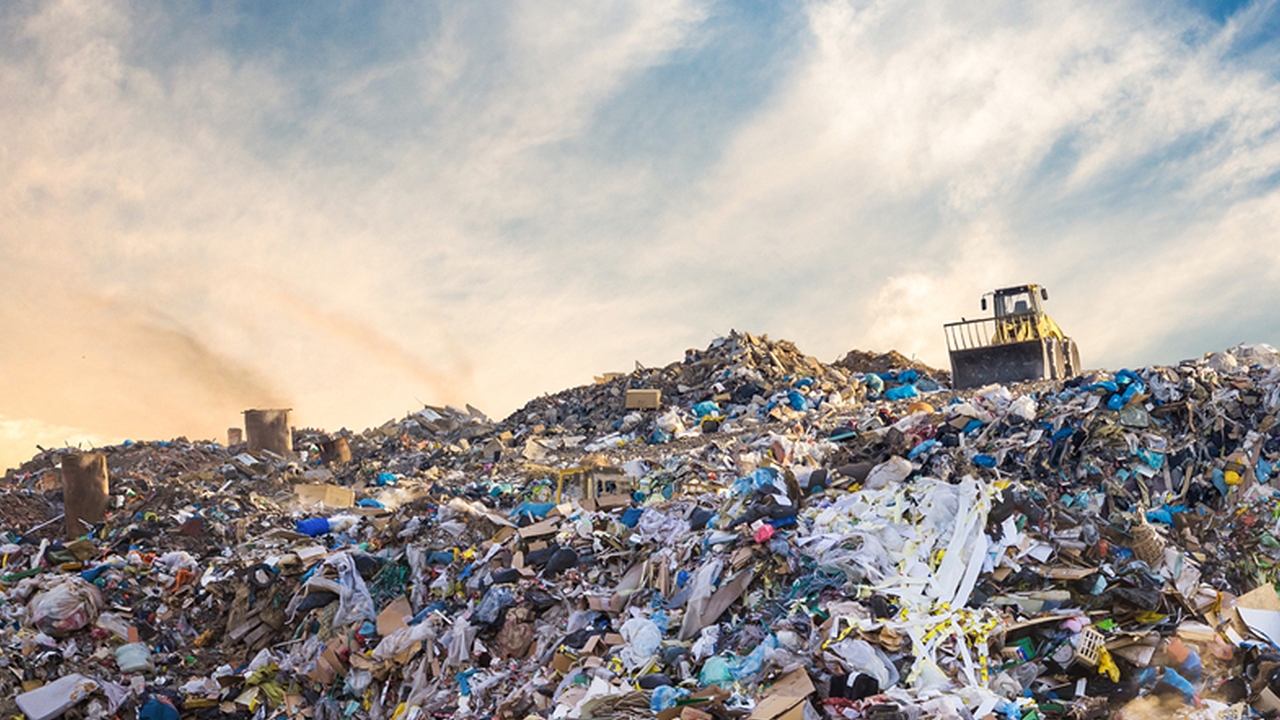Gasification promises solution to landfill crisis
A pilot project run by the University of Florida has demonstrated that gasification plants can recover chemical feedstock from mixed packaging waste. Now a consortium of packaging groups aims to scale the process up.

A pilot project run by the University of Florida has demonstrated that gasification plants can recover chemical feedstock from mixed packaging waste.
A 400-year-old technology to derive flammable gas from fossil fuels could provide the key to sustainability for today’s label and packaging industries, according to a presentation by the Consortium for Waste Circularity (CWC) delivered at the TLMI Eco Stage at Labelexpo Americas.
The Consortium vision proposes using demonstrated pilot robust gasification technology at a landfill site to transform all unrecycled organic waste into methanol - the precursor for manufacturing plastics.
The principles of gasification were established in the 1600s when experimenters discovered that heating organic materials to temperatures above 700degC with a controlled amount of oxygen or steam breaks their molecular bonds to produce synthetic gas, or syngas, consisting of carbon and hydrogen.
By the 1850s, coal-based gasification was producing ‘town gas’ that powered streetlights in cities across the US and Europe.
In principle, everything that can be made from fossil fuels can also be made from syngas. Syngas can be converted into feedstock chemicals such as methanol, ethanol, dimethyl ether and acetic acid to be used for subsequent synthesis by the chemical industry.
Ancient principles for today’s problems
The Consortium for Waste Circularity employs a more advanced form of gasification technology, though still based on the same fundamental principles, called robust gasification. This process achieves higher temperatures than previous gasification – in excess of 2,000degC. At these temperatures, organic chemical bonds are broken, and inorganic materials are melted down. Carbon-rich organics are primarily converted into syngas while metals and inorganic oxides, primarily metals and glass, are melted down and recovered as ingots and glassy materials. All these products become feedstocks for subsequent value-added commercial applications.
There are two key innovations in the business model pursued by the CWC. Firstly, to co-locate the gasification plant with landfills to provide an almost limitless amount of feedstock, and secondly to sell the methanol (called Eco-Methanol) derived from syngas to the plastics industry. Methanol can be used as a feedstock for manufacturing plastics.
Plastics produced from syngas-derived eco-methanol are ‘virgin’ plastics with the same quality and properties as plastics produced from fossil fuels. ‘Waste-to-syngas-to-methanol-to-plastics offers a true pathway to the sustainable circular economy,’ proclaims Mike Ferrari, president of the Consortium for Waste Circularity.
Ferrari points out that some 85 percent of landfill volume consists of organic waste, which includes mixed packaging waste.
Because gasification is not incineration – the chemical bonds are broken at a temperature below the combustion point - there are no smokestacks, few carbon emissions and no toxic ash, all typical by-products of incineration.
Pilot program
The technology has been used commercially to treat hazardous chemical and medical wastes. The CWC has been working with Professor Bruce Welt at the University of Florida to arrange pilot-scale trials for packaging industry stakeholders. Trials are proving the promise of the process’s robustness.
Ferrari says, ‘to date, no material has been refused, and all trials, even those laden with chlorinated barrier polymer, PVDC, have been successful.’
Robust gasification can accept all organic waste including food, corrugate, paper, multi-layer packages, with fitments, unwashed peanut butter jars, flexo plates, all plastic films regardless of layers, metallization, chlorine, PFAS, etc. All organic feedstock with no exception can produce syngas and resulting in post-consumer recycled-content Eco-Methanol.
By co-locating regenerative robust gasification facilities at landfills, landfill gas (methane) can be collected to power the process. Additionally, landfill area is freed up, potentially to install solar power to also power the gasification process.
‘The real breakthrough idea is that you co-locate regenerative gasification plants with a landfill making this compatible with all current recycling streams,’ Ferrari says. ‘So whatever comes to the landfill can be processed and the logistics are already in place,’ says Ferrari.
‘We are taking any kind of mixed label and packaging waste. It does not have to be pre-sorted and everything can be recovered without any harmful emissions. Any other model of collecting and processing packaging waste is just chopping away at the edges.’

One of the most difficult packaging-related products to recycle is the flexo plate.
MacDermid engaged the University of Florida to test its flexo plates that were sent to a laboratory size robust gasifier where they were successfully processed. ‘And those plates were contaminated with inks when they were shredded and fed to the gasification plant,’ Ferrari points out.
The Consortium for Waste Circularity is now seeking private equity backing to create the first commercial scale plant at a landfill sites across Florida to prove the concept at scale. Founder members of the CWC are the Flexible Packaging Association, Belmark, the PPI Technologies Group, Sixto Packaging, Tamperguard, Intertape Polymer Group (IPG) and Tempo Flexible Packaging.
Ferrari speaks passionately about why the gasification project needs to succeed.
‘Firstly, our major cities are rapidly running out of landfill space and in many cases are trucking waste to other states for burial. Secondly, landfills are the third biggest source of CO2 emissions globally. Other carbon-intensive industries like aerospace have already committed to net zero carbon and the packaging and waste industries need to make a similar commitment.’
To find out more about the Consortium for Waste Circularity’s work, visit wastecircularity.org
Stay up to date
Subscribe to the free Label News newsletter and receive the latest content every week. We'll never share your email address.


